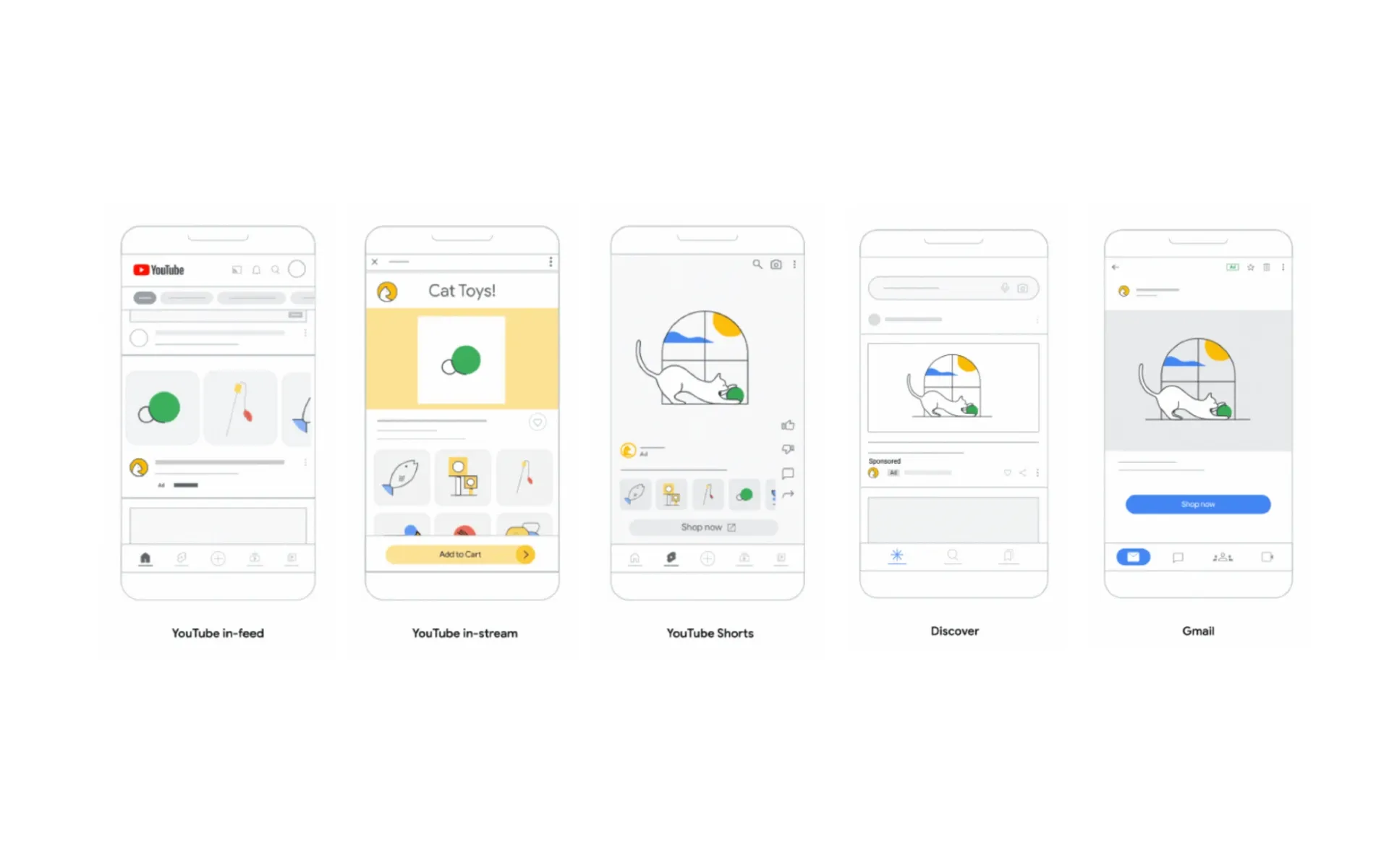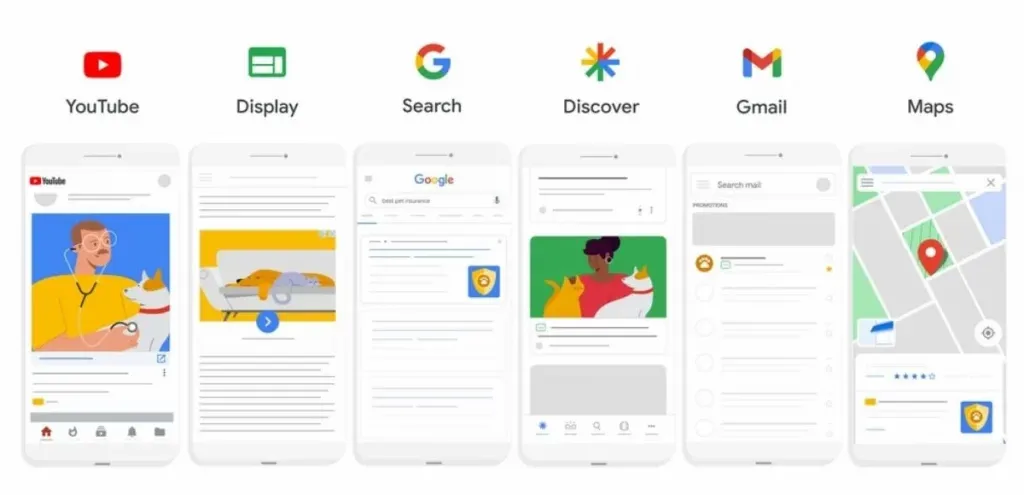Understanding Demand Gen Placements
Explore Demand Gen placements, Google's approach to serving visual ads across YouTube, Discover, and Gmail platforms.

Demand Gen placements represent Google's strategy for serving visually appealing advertisements across some of its most engaging platforms. This approach allows advertisers to reach potential customers through multi-format ads on YouTube, Discover, and Gmail - three of Google's most visually immersive surfaces.
Demand Gen campaigns are strategically significant for Google's revenue model, particularly in light of its reduced revenue sharing with content creators. Unlike traditional YouTube ads where Google must split revenue with video creators, Demand Gen placements on surfaces like Discover and Gmail allow Google to retain a larger portion of advertising revenue.
At its core, Demand Gen campaigns are designed to capture user engagement and drive action across these platforms. The placements are particularly well-suited for social advertisers who want to leverage high-impact visual content to connect with their audience. According to Google, these placements can potentially reach up to 3 billion monthly active users, offering advertisers a vast audience for their campaigns.
One of the key aspects of Demand Gen placements is their focus on YouTube, including YouTube Shorts. YouTube has become a significant platform for product and brand research, with Google reporting that it is twice as likely to be used for this purpose compared to other video services and social media platforms. This makes YouTube a particularly valuable surface for Demand Gen placements, as it allows advertisers to reach users when they are actively seeking information about products or services.
The specific placements within YouTube include in-feed ads, in-stream ads, and Shorts ads. In-feed ads appear in the YouTube home feed, search results, and watch page feeds. In-stream ads play before, during, or after other videos. Shorts ads are tailored for the short-form vertical video format that has gained popularity on the platform.

Discover, Google's personalized content feed (Android phones, Chrome, Google app, Google homepage, etc), is another important surface for Demand Gen placements. These ads appear alongside content that Google's algorithms determine to be relevant to individual users based on their interests and search history. This placement allows advertisers to reach users in a context where they are already engaged with visually rich content.
Gmail ads represent the third major placement for Demand Gen campaigns. These ads appear in the Promotions and Social tabs of users' Gmail accounts, allowing advertisers to reach potential customers directly in their email inbox. While email might not initially seem like a visual medium, Gmail ads can include images and other visual elements that stand out in the email interface.
A key feature of Demand Gen placements is their use of artificial intelligence to optimize ad delivery. Google's AI systems work to create the most effective combinations of visuals, messages, and placements for each individual user. This personalization extends to the use of lookalike segments, which help advertisers reach new audiences that share characteristics with their existing customer base.
The technology behind Demand Gen placements involves complex algorithms that analyze user behavior, preferences, and engagement patterns across Google's platforms. These algorithms use this data to serve ads that are most likely to resonate with each individual user. The system also incorporates real-time bidding and optimization, allowing advertisers to adjust their campaigns based on performance metrics.
From a technical standpoint, Demand Gen campaigns offer several advanced features. These include AI-powered bidding and measurement tools, which allow advertisers to optimize for various goals such as website traffic or high-value user conversion. The system uses data-driven attribution to show the full value of a campaign within the Google ecosystem, providing advertisers with a comprehensive view of their return on investment.
Advertisers using Demand Gen placements have access to a range of creative options. These include various image formats (landscape, square, portrait), video formats (horizontal, square, vertical), and text elements (headlines, descriptions, calls-to-action). The system also supports carousel ads and product feeds, allowing for more dynamic and interactive ad experiences.
Measurement and reporting are integral parts of Demand Gen placements. Advertisers can access insights and reporting metrics for all individual assets and formats used in their campaigns. Google offers tools like Brand Lift, Search Lift, and Conversion Lift to help advertisers measure the impact of their campaigns beyond just clicks and impressions.
It's worth noting that Demand Gen placements are distinct from other Google advertising products like Search ads or Performance Max campaigns. While Search ads focus on text-based ads served in response to specific search queries, and Performance Max aims to maximize performance across all of Google's channels and surfaces, Demand Gen placements are specifically designed for visual, entertaining surfaces.
The introduction of Demand Gen placements reflects the growing importance of visual content in digital advertising. As consumers increasingly engage with visual platforms and short-form video content, advertisers need tools that allow them to create compelling visual narratives and reach users across multiple touchpoints.
Key facts about Demand Gen placements
Serve ads on YouTube (including Shorts), Discover, and Gmail
Potential reach of up to 3 billion monthly active users
Focus on visually appealing, multi-format ads
Use AI for personalized ad delivery and optimization
Offer advanced measurement and reporting tools
Support various creative formats including images, videos, and carousels
Distinct from Search ads and Performance Max campaigns
Designed for social advertisers and visual storytelling


